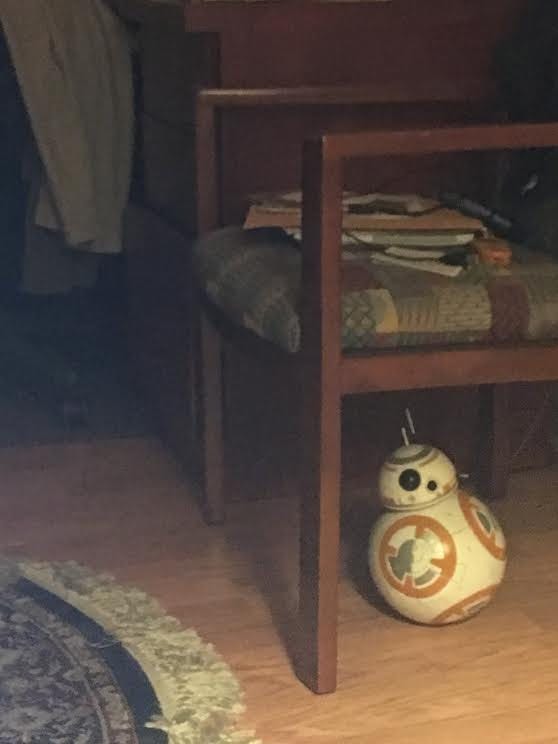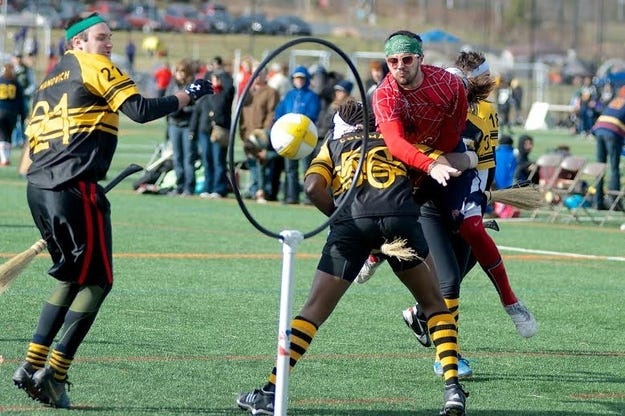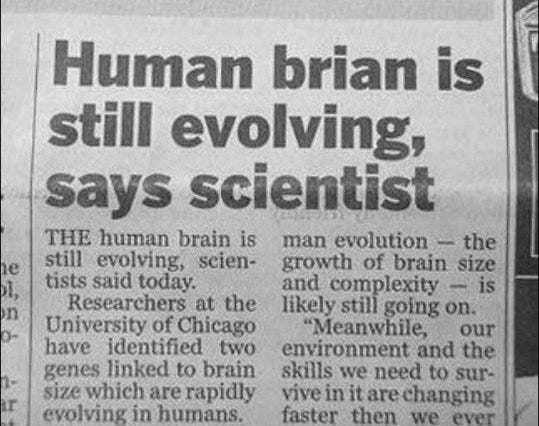EPISODE 224 -- THINGS MAY BE CLOSER THAN THEY APPEAR
POP CULTURE SPIRIT WOW
The first lightsaber-related death actually happened three minutes before the first sale. It involved two kids, of course; these events always do. We still don’t know how they got a Kyber crystal ahead of time; likely a relative with a transporter and an access code (though there is Redditalk that the BBC has finally finished its TARDIS). The Dicks are of course investigating.
As the store doors opened, the older kid whipped his wand from his Hogwarts robe and cast something -- we think he’d uploaded a new spell hack, maybe that Velocitor. In an instant the two of them were at the displays, the younger had a saber out and powered up, and the two of them were battling wand vs. saber.
On the security Facefeed you can see the scene is electric – crowds who three seconds ago were racing to make sure they got a red blade just stand there in awe at the boys’ explosive ballet of color and joy. Most people apparently thought they were Davids programmed to market. When the older boy tripped just as his brother lunged, stabbing him through the chest, the audience erupted with applause.
At the funeral, the boy’s father expressed what everyone of a certain age was feeling: “As painful as this is, the idea that my son was able to live even for just a moment in a world where there actually are lightsabers is something I take great comfort in.” Even the Pokemon left in the back of the church stopped fighting for a moment at his words.
Sales of course have been incredible. Saber/wand duels have also become a fad on playgrounds, as have Jedi-themed funerals.
++
Right now, as I’m writing this, across the room peeking out from underneath a chair is my very own Force Awakens BB-8 droid. He’s not a model; he beeps and moves around in ways uncannily similar to the character of the movie. More than that he just has this way of looking at you, full of interest and personality.

You can’t help but love him, right?
According to the standard histories of cinema, among the many things that Star Wars introduced was the massive commercial possibilities of merchandising. Action figures, trading cards (do you remember the trading cards? I think somewhere in my parents’ attic there is a garbage bag filled with red, yellow, blue and green sets), toys and Halloween costumes – it all started there.
But there’s a still greater commercial possibility than I think we might be standing at the cusp of, and that is actually buying the tech that’s in the films we love. You want a blaster? A cloak that makes you invisible? An adorable robot? It’s all coming.
This isn’t news, really. When I was a kid, we were always hearing about a Jetsons future where you could talk via your TV screens to other people in other parts of the world. Today we have that and it’s on our phones, too, and it’s a lot less entertaining than I expected -- man does talking to a two-dimensional head make me feel uneasy.
(Meanwhile scientists appear to have figured out a way to stream video across star systems.)
Likewise, remember the Star Trek tricorder? Yeah you do, it’s in your pocket, and it can do almost everything it did on Star Trek -- there are apps to check your position, the wind speed, radiation levels, blood pressure and your pacemaker. Oh, and your phone looks way cooler and has Candy Crush on it. (Yet another reason I have trouble with Star Trek – only in that over-idealized world would people have handheld devices and not be doing stupid things with them 99% of the time. You know Spock is secretly obsessed with getting all the angles right on Angry Birds. #AngryTribbles)
(Crazy but true: As I was googling Star Trek-like things you can do on your smart phone, I tried “DNA scan app”. The first couple things that come up are these gag apps that use your fingerprint to make it seem like your phone can scan your biology. But then, there was this article from two years ago. Apparently, a UCLA prof has created a way to use a smart phone to do microscopic scans of your DNA.)
(The real moral of that story: Go Bruins.)
++
Here’s another straight-out-of-scifi game changer that I can’t wait for but is also kind of already here: the gesture-based screens in Minority Report.

For those who don’t know the film: cop working in a darkish future where precogs predict crimes before they happen; and (of course) something not quite right is going on. Tom Cruise, Steven Spielberg. One of the great scifi flicks.
(Also on that list for me: Blade Runner; Children of Men; Wall-E.)
As soon as I saw those screens, a) I wanted one NOW and b) I knew that’s what the future looked like – not touchscreens, not chalk/dry-erase/crazy-person-string-and-pin boards but projected data moved via gesture. It just seemed so easy to understand, fun to do and super-practical – all you need is a computer, a projector and open space.
(It’s funny – as I was writing this I went back to the Minority Report moment linked above; I was shocked to see how much clunkier it is than I remember. As you can see in the ad above, Cruise stands before an actual thick screen, people have to insert big awkward glass rectangles into it – think a crappy minimalist version of Superman’s data crystals -- to up- or down-load data. Today’s TV/film versions has no such hardware; there’s just some sort of holographic projection, and when you need data moved you just gesture-throw it to the device you want and bam, it’s there.)
The first iPhone came out five years after Minority Report. (The ten year anniversary was actually last week; the media celebrated with stories like this one about how the iPhone came about in large part because Steve Jobs was so tired of a guy from Microsoft who was always bragging.)
And one of its main trademark features? Its use of gestures.
(And another? As we’ve already said, it looks like a tricorder.

Okay, an iPhone looks way better. But still.)
Years later, in the keynote to announce the iPhone 4, Jobs said, “I grew up here in the U.S. with the Jetsons and Star Trek and communicators, dreaming about video calling, and it’s real now.” For me, that’s some of the craziest magic of scifi in a nutshell: not just the commentary they make about our reality, but that some of their ideas are so compelling, so seemingly right or necessary, they became a part of how we understand what the future will be. The world we look forward to, the one we want is one we’ve already experienced.
Or, in the case of things like lightsabers and Star Wars, the worlds themselves are so rich and meaningful, we want the stuff from them so that we’re able to participate more fully in them. Today Quidditch is a club sport played on college campuses across the world, and even if each player does "ride" a tiny non-flying broomstick that makes them look kind of ridiculous, it's like, for real.

And you’re telling me we’re not bound for a future with technologically-enhanced sticks and Golden Snitches?
(In one version of my microstory there’s a whole aside about the many children who have died chasing Golden Snitches. That thing is a legitimate death trap.
Also, I have to have one.)
So yeah, I don’t know about you but I think it’s all happening – lightsabers, wands, completely avoidable injuries and everything else. And before we know it movie watching may have sales booths at the exits, like at musicals, so I can impulse buy Star Lord’s very cool ray gun.
It’s a wild kind of magic, and in some ways a recipe for disaster, and yet I’m almost certainly that out-of-touch dad saying “Isn’t it all amazing, though? I can’t wait for more.”
++

Way to go, Brian.
++
Under the topic of other things I want the future to include, I recently came across this story by Egyptian artist Ganzeer about a fun sort of “care package” practice he maintained with a childhood friend. It’s such a wonderful idea I print it here in full. (If you like what you read, you can subscribe to Ganzeer’s newsletter here.)
When I was a child, my friend Abdul Rahman and I started a habit of exchanging what I can only describe now as "mail-art". Although no actual mailing occurred, because that would have been an unnecessary expense. We were, after all, just children with absolutely no money to speak of. Our wills and desires highly controlled by the all-knowing, all-powerful grownups. And, well, we saw each other everyday.
What we did was: once a week, one of us would hand the other an envelope or small package of sorts. Inside it would be what felt like a treasure trove of drawings, mini-comics, puzzles, riddles, and stories. The receiver would then spend the week creating a package in response, which he would in turn hand over during recess at school. Naturally, there was an inclination to up the tempo with each package. Drawings would become more laborious and ridiculous, puzzles more sophisticated, riddles more tricky, and stories would become more convoluted. I recall rather vividly the joy of both receiving and making these fun little art objects.
In reception, there was of course the element of surprise. I never knew what would be inside Abdul Rahman's inventive packages. I could never guess what new things would be in store for me, things that I knew he made just for me. What a great feeling that was. There was also the tactility of it all. The opening of the package, and finding little hidden gems in the folds and crannies of paper. One time Abdul Rahman had tiny stick figures at the bottom corner of the pages, which when flipped through very quickly created an animation. This, of course, is not astonishing to us now, but when I first saw it as a kid, created by my friend Abdul Rahman, I thought it was just about the coolest thing I'd ever seen. And it was created by my friend! Someone just like me, not one of those... y'know, grownups, who might as well have been Gods for all we knew.
Such discoveries fueled my drive to hit back with even more astonishing surprises for Abdul Rahman. One time I presented him with a small 3x3 inch package, about 1 inch in thickness. The front featured the Superman emblem, hand-drawn in the gloriously saturated colors of cheap kids' markers, against a blue backdrop filled in with pencil colors. Once the tape keeping it sealed was removed, a man's bare chest dominated yet another package within. Once that layer was peeled, human lungs and other organs adorned the 3rd layer of packaging, and you would peel away at the various layers until nothing at all was left. Which I thought was pretty clever. I might've been inspired by something I'd seen in Science class, but I actually don't really remember, because school was the pits and everyone sucked. Except Abdul Rahman. I never actually got the satisfaction of seeing Abdul Rahman's face when opening the package, because the opening of packages was something we did upon returning home from school, something we did in private, but I got the satisfaction of devising something, of making something that I thought he might get a kick out of. I got the satisfaction of imagining the look on his face as he opened the package, and that imaginary look on his face is still lodged in the memory grooves of my brain as one of my proudest achievements.
One might assume that Abdul Rahman and I were driven to devise this method of art exchange purely out of boredom, but I think you'd be mistaken because I was actually one of the few kids in my hometown of Cairo, Egypt who grew up with a Nintendo Entertainment System. Nobody I knew had a Nintendo back then, or even a computer. If anybody did have a gaming console – and those kids were rare – it was almost certainly a crappy Atari. I had games like Karateka, Meteorite, and Duck Hunt, where I used an actual physical gun to shoot ducks on my television screen! Fascinating things for any child to experience, but still, nothing quite gave me as much thrill as the making, giving, and receiving of these art things to and from Abdul Rahman. I can't really remember how or why we started, but I remember that once we did, it was impossible to stop. Until, well, we did stop.
++
I have to say, after watching Twin Peaks the last couple months one of my biggest writing convictions right now is that the slower I make my way through each scene, the better. There’s so much to be discovered if you just have some patience.
For instance: there’s an incredible scene in episode six of the new Twin Peaks where a random kid you’ve never met gets hit by a car. It comes kind of out of nowhere; one of the major themes of the show this year seems to be how violence and horror often just happen out of nowhere. Which boy do I resonate with.
And this particular sequence shines an even brighter light on that fear of the unknown by having the kid be playing an unusual version of tag with his mom where he gets to run a little bit ahead of her, but not too much, then he stops and looks back and she runs and catches him. And on they go. It’s this striking metaphor for our fears and desire to protect our children in a chaotic world.
And of course it’s exactly because of the protective contours of their game that he dies. OOF.
After the accident you’d think the scene would be mostly over. But instead Lynch offers this pretty long sequence of a witness coming up to the woman, who is crying in the street, her son in her arms, and just standing there with her, looking her in the eyes, saying nothing. It’s freaking weird, and you know Lynch knows it, but he just stays with that moment anyway. And what do you know, the weirdness passes and then you just feel her sadness so much more.
That’s what I want to do with the revisions I'm working on. Don’t rush to the next plot point. Give each moment a chance to breathe, and see what greater depths you discover.
Or what greater fart jokes, I guess. You know, as the Spirit...moves.
++ LINKS ++
If you only read one thing this week: There is a new astronaut named Jaws and that is actually the least cool and interesting thing about them.
As part of my continued attempt to help us all live vicariously through the good things happening in other parts of the world, consider the hilarious craziness around Emmanuel Macron’s official photo.
Also, this scene of the Irish and Canadian Prime Minister exchanging a laugh about the Irish PM’s Canadian-themed socks:

Lastly, under the topic of things that are both disturbing and fitting, it turns out 1984 doesn’t end the way we Americans were told it does. Of course.
Take it gently. You're not alone.

